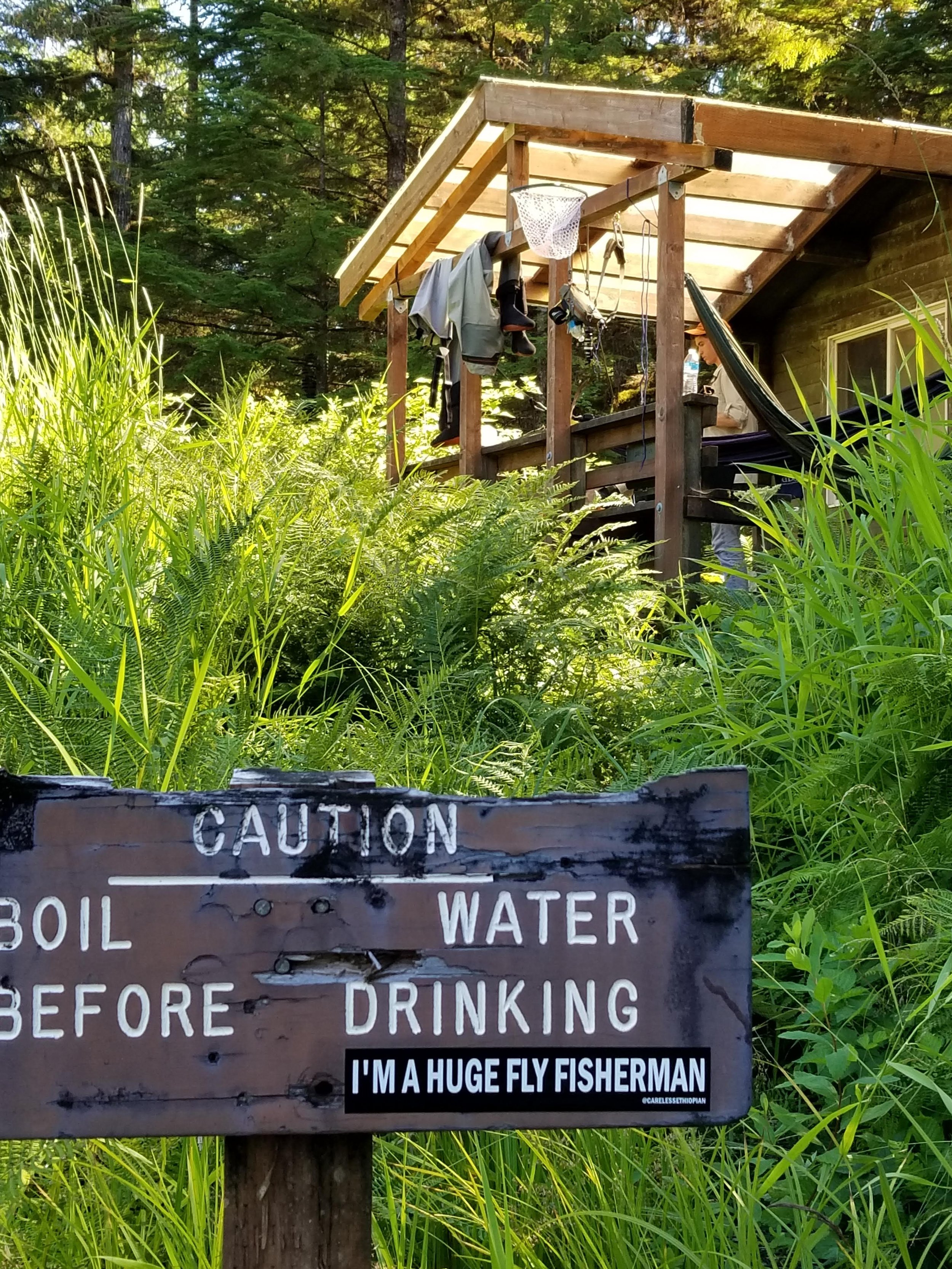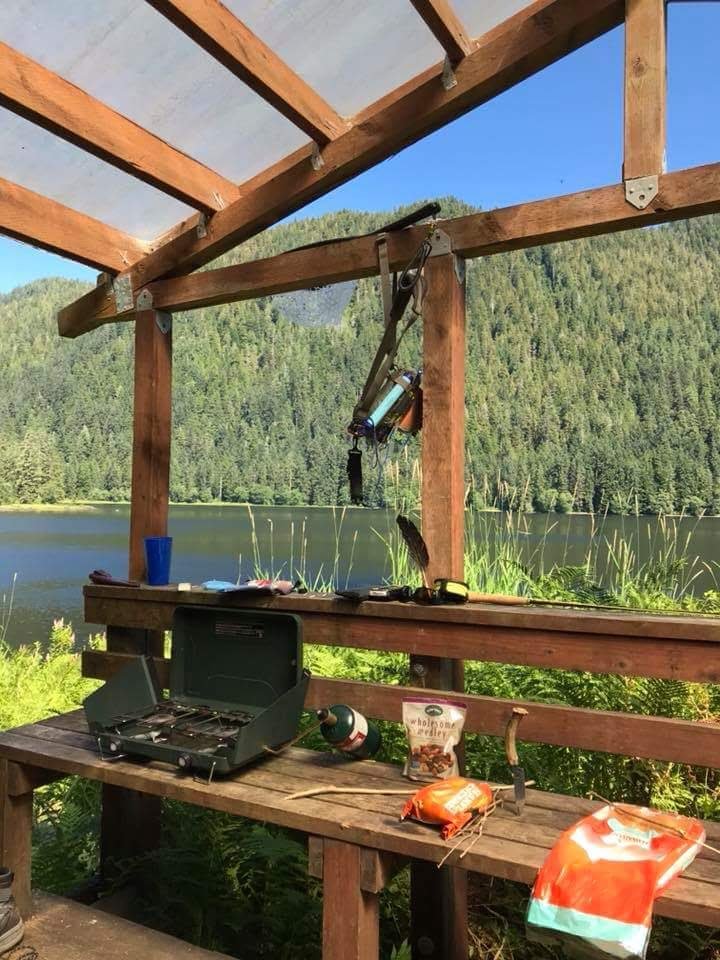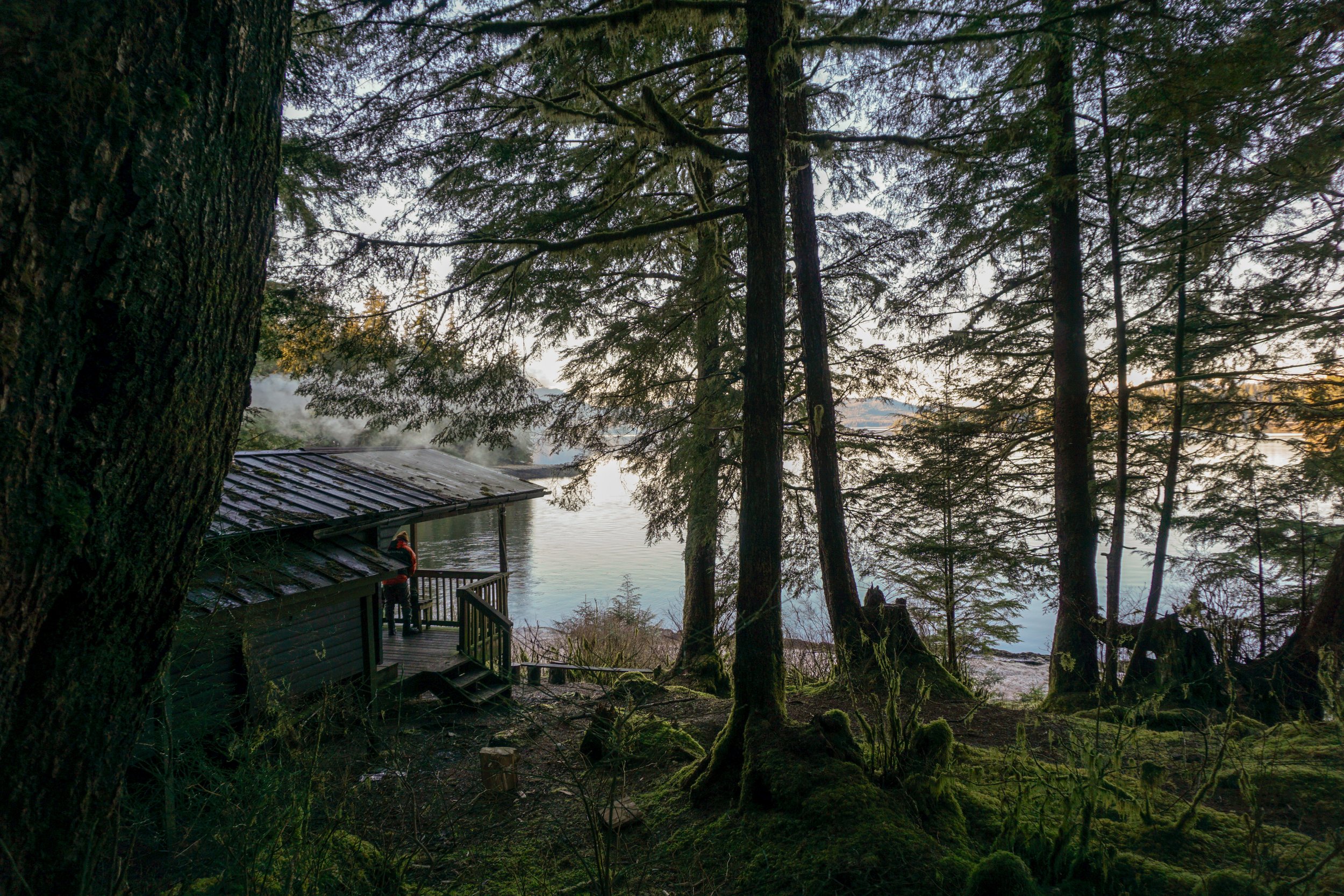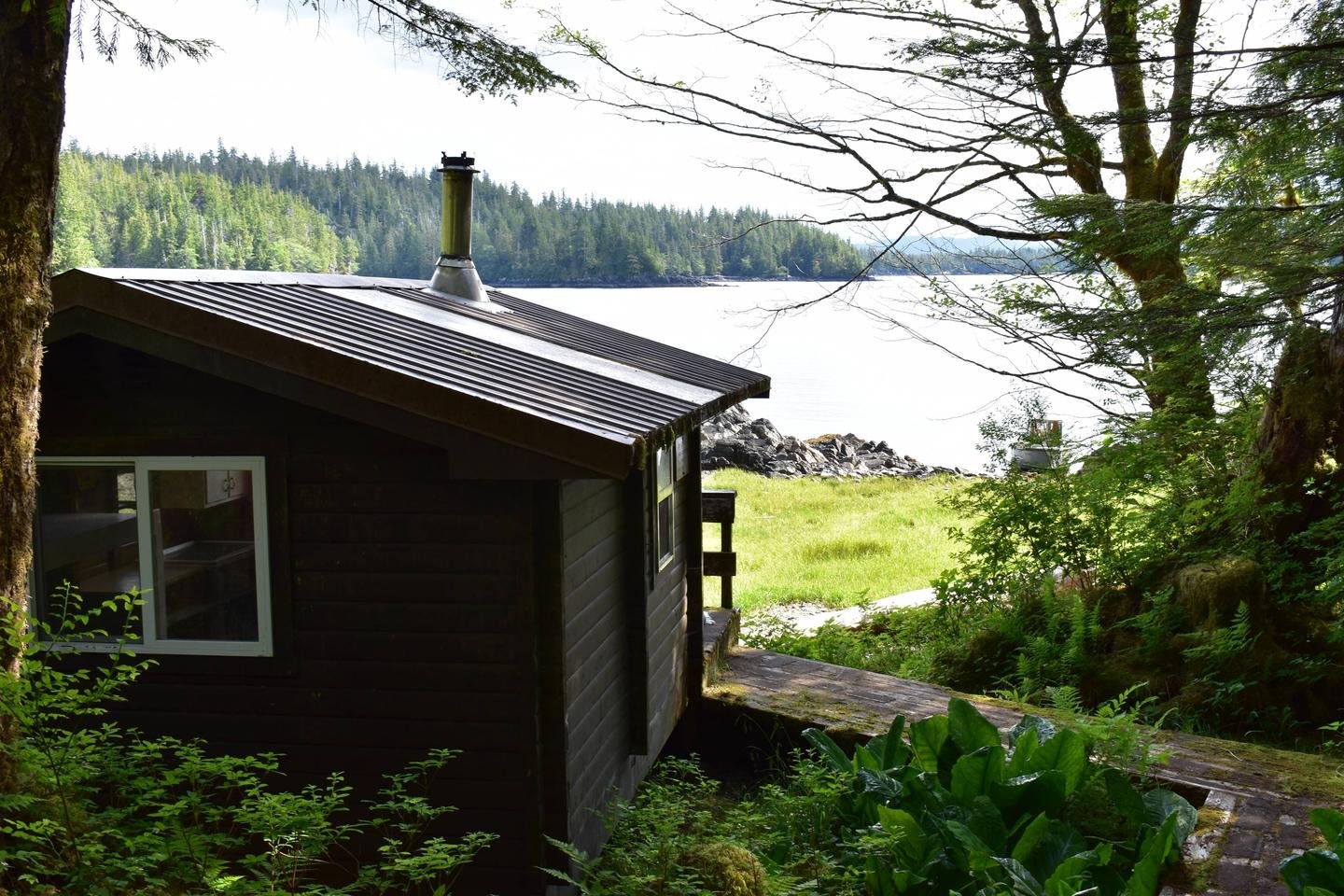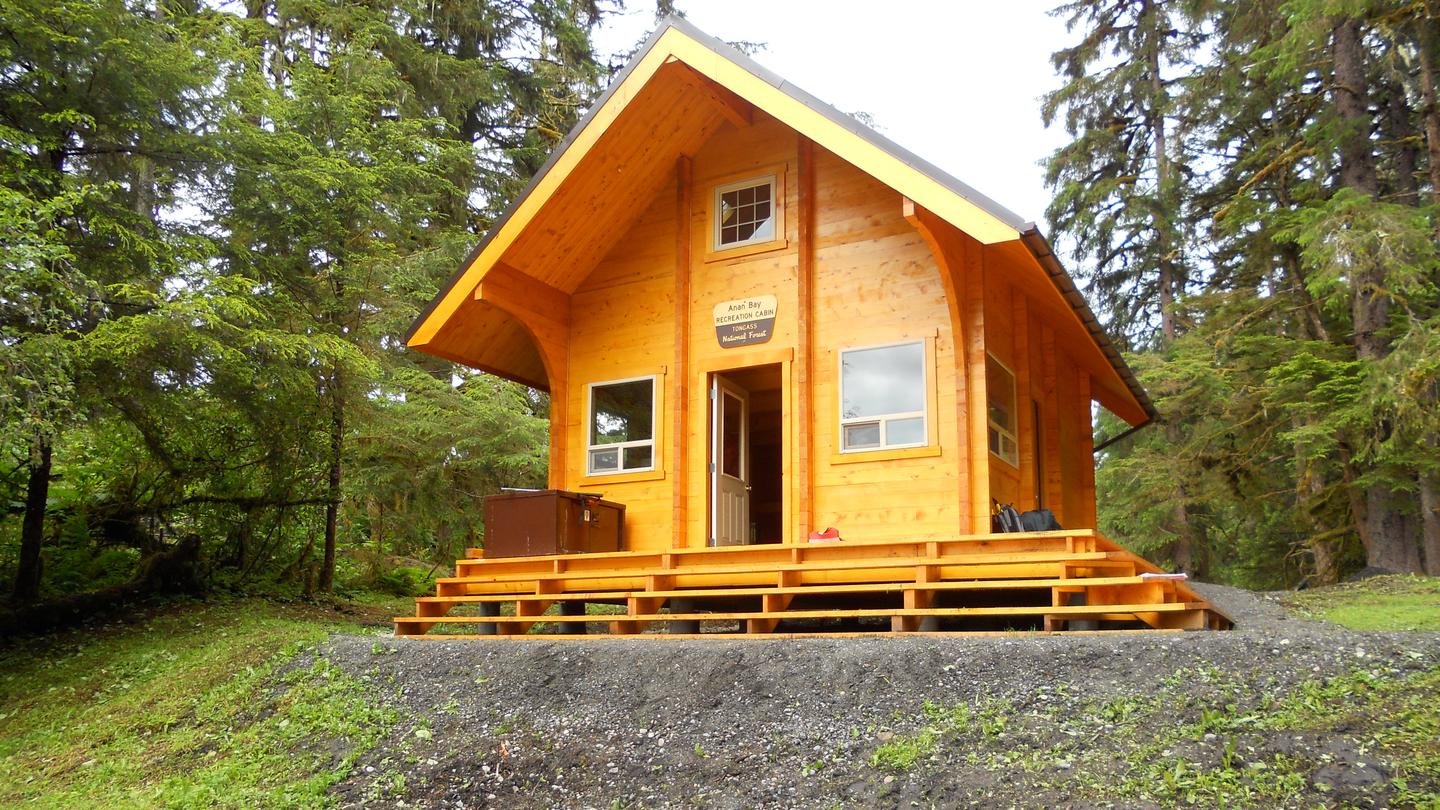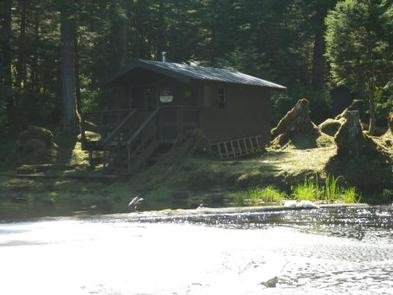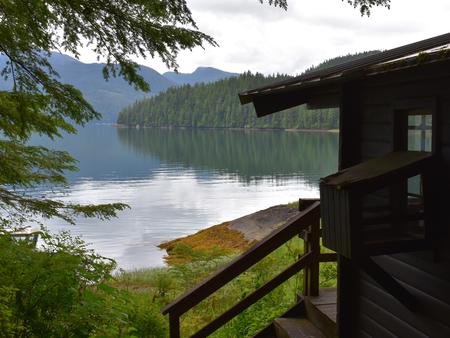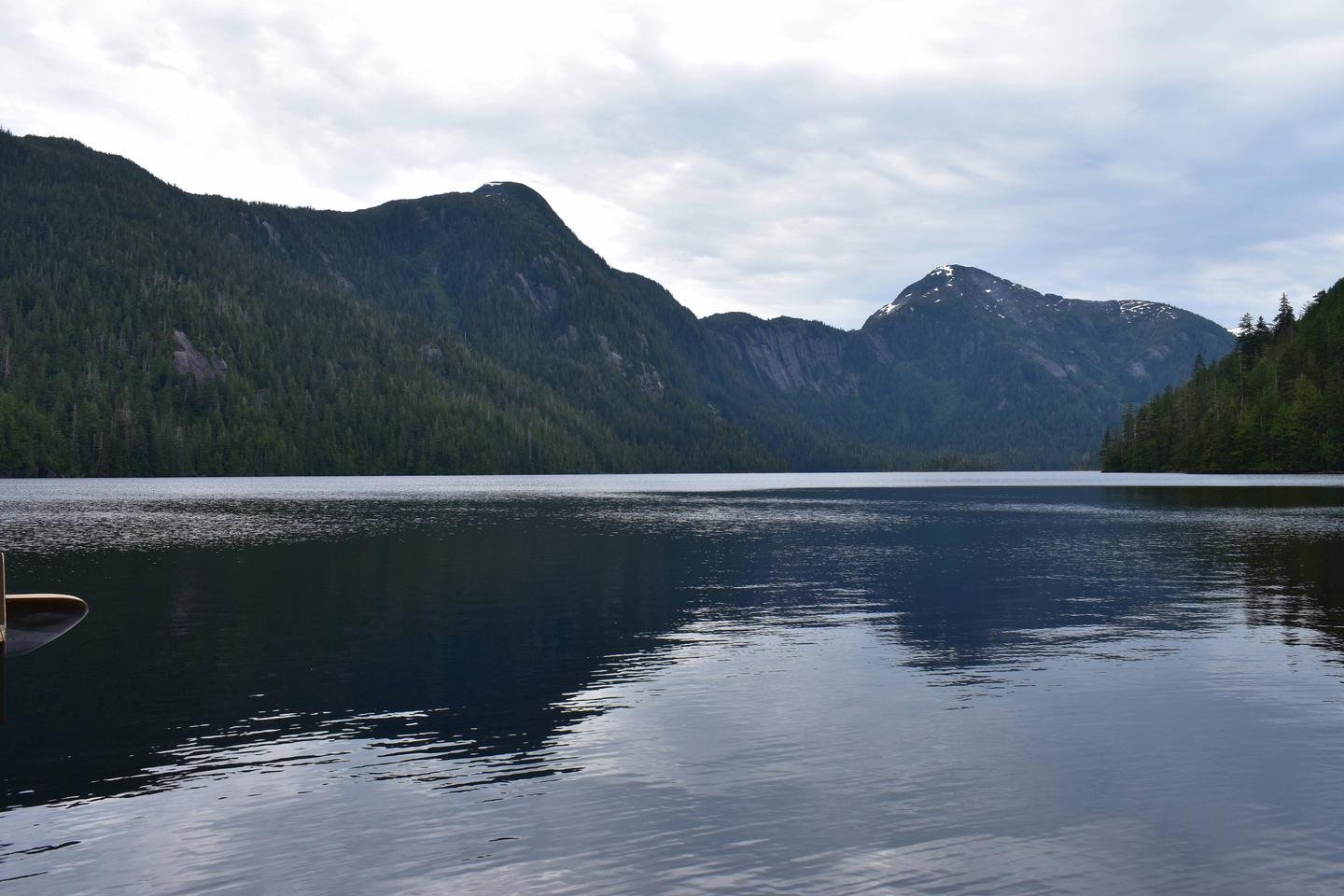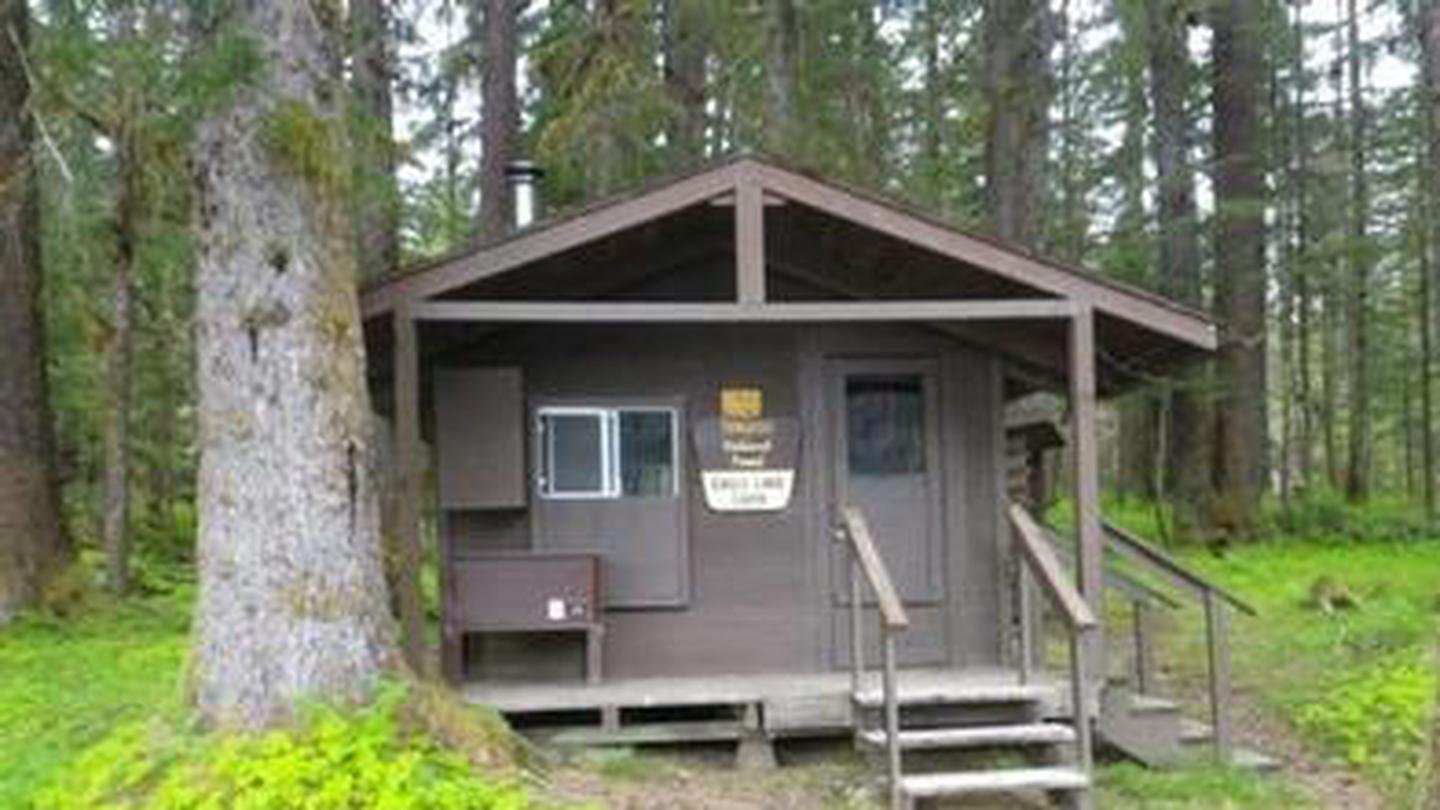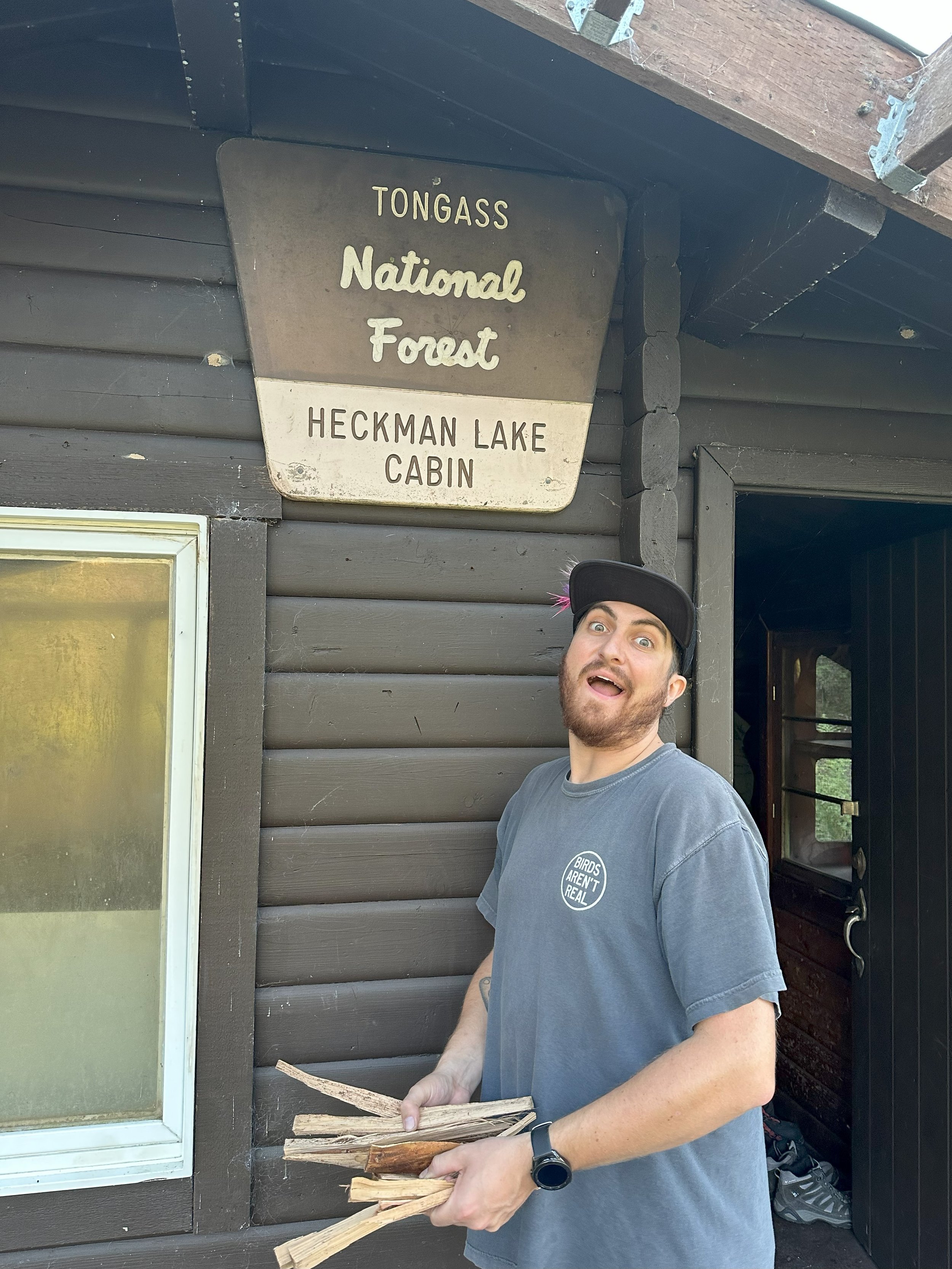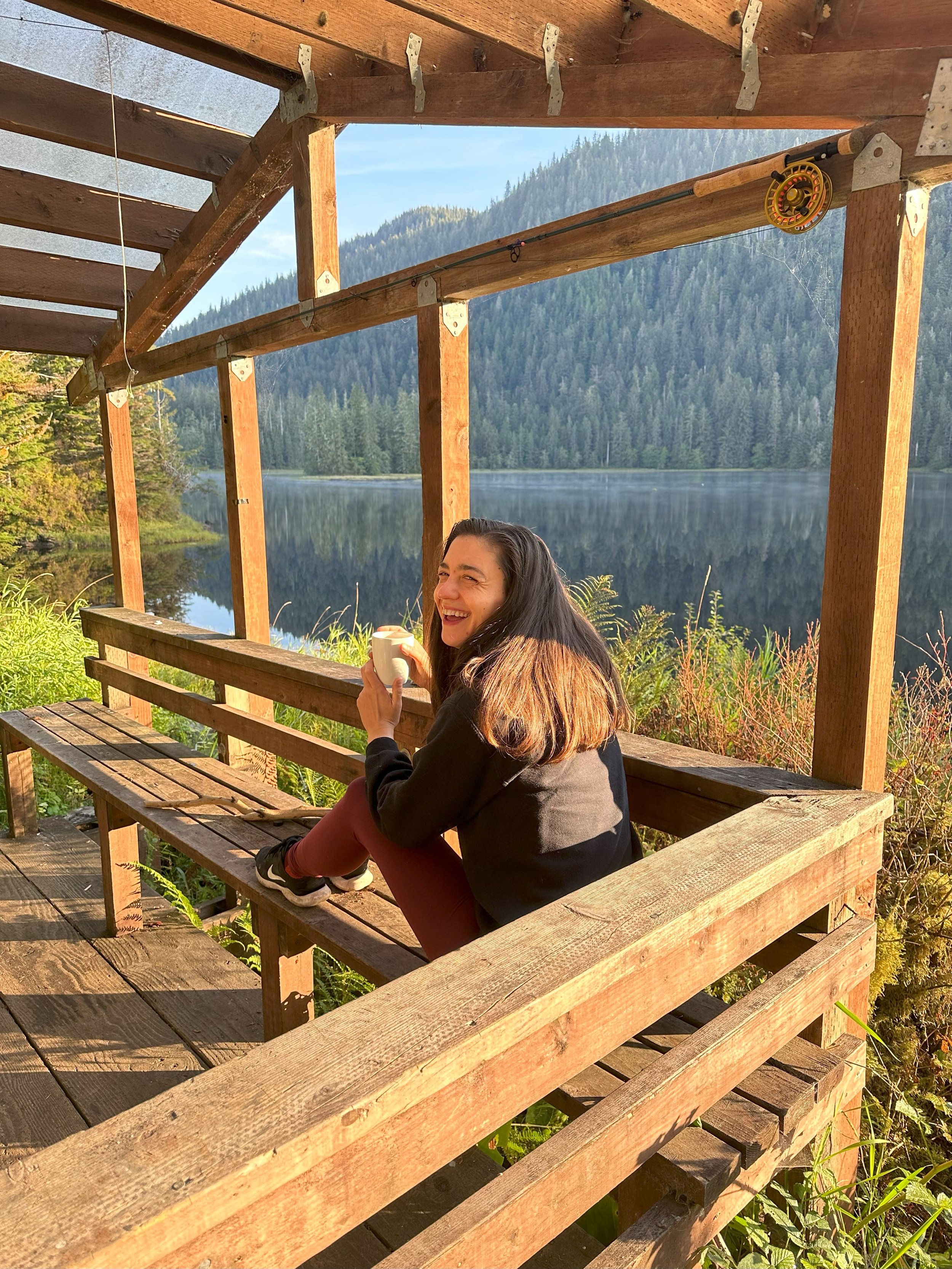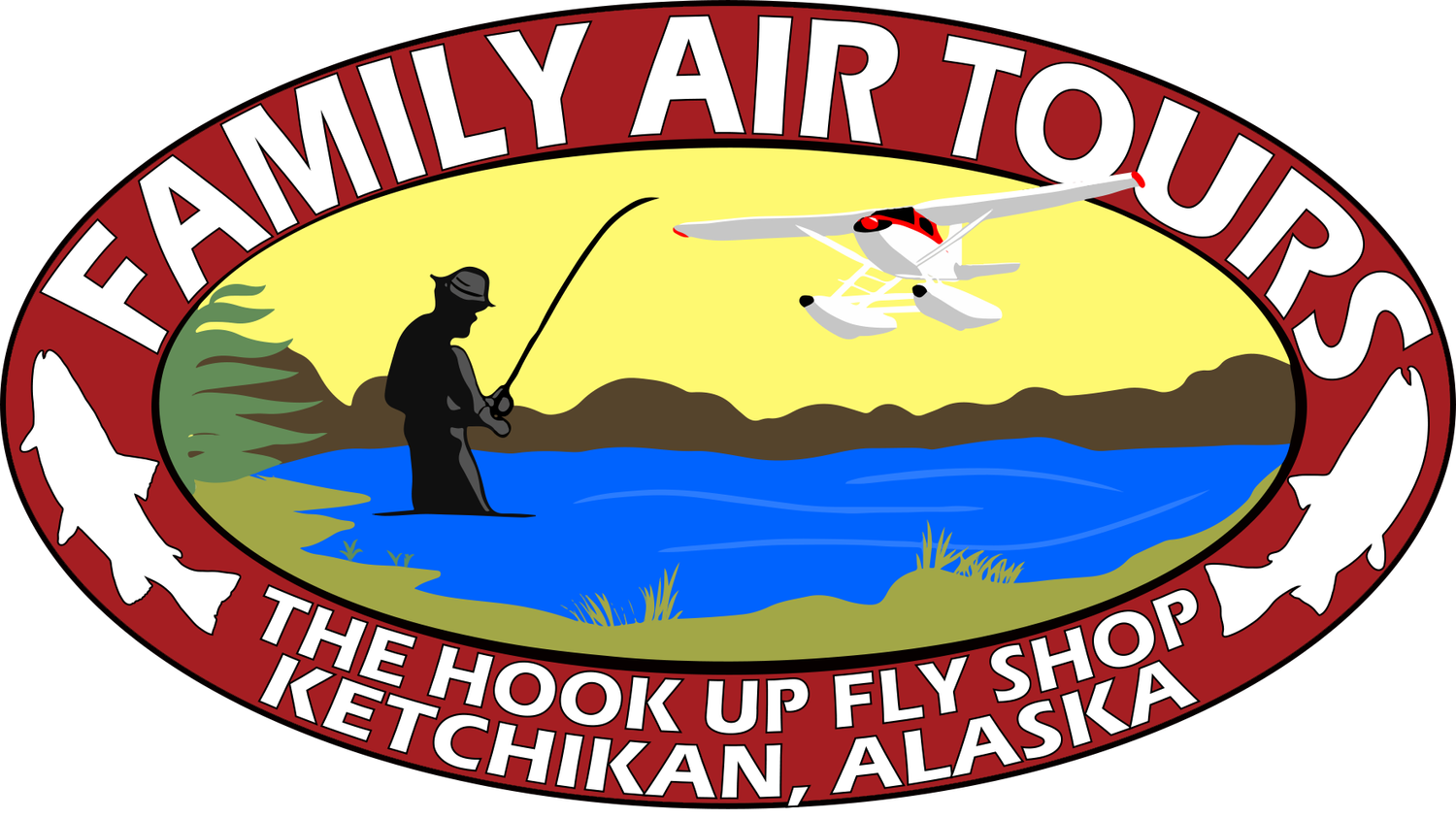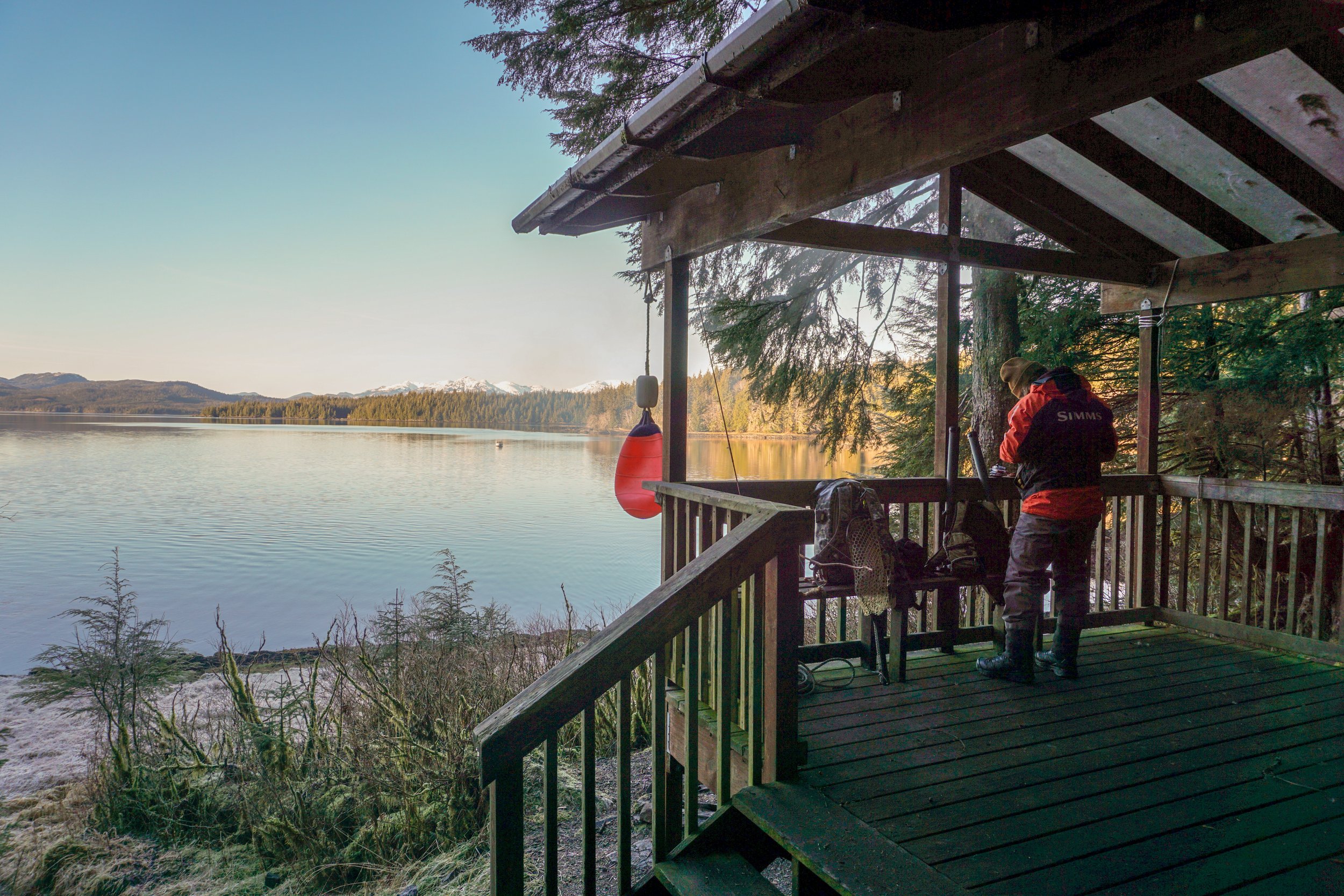
Cabin Trips
Have your own Adventure
Imagine a remote wilderness adventure that begins in Ketchikan, Alaska. You board a seaplane, its engine rumbling as you lift off over the sprawling Tongass National Forest. The plane skims over serene fjords and lush green islands before bringing you to a secluded U.S. Forest Service (USFS) cabin, nestled deep in the Alaskan backcountry. As the plane touches down on a remote lake or bay, you’re greeted by towering evergreens, mist-covered mountains, and the call of wildlife echoing through the air.
The cabin itself is a rustic yet comfortable base, perfect for days spent fishing or hunting. Surrounded by pristine rivers, lakes, or coastal waters, you’ll find yourself in prime territory for catching salmon, trout, or char. For hunting enthusiasts, the dense forests and meadows around the cabin offer opportunities to spot deer, bears, and other game.
Here, nature is your companion. With no cell service, your days are filled with the simple yet exhilarating tasks of outdoor survival and exploration, and your nights are spent by the fire, perhaps grilling your fresh catch of the day. Whether it’s casting your line into crystal-clear waters or scouting for game in the twilight hours, this remote cabin trip promises solitude, adventure, and a true connection with Alaska's wild landscape.
As you sit on the cabin's porch, with nothing but the wilderness around you, the sense of peace and freedom is unmatched, and you know you'll remember this journey long after you return to civilization.
Booking a remote fly-out cabin trip with Family Air in Ketchikan, Alaska is a straightforward process that allows you to experience the wilderness in the most authentic way. Here’s a step-by-step guide, including important considerations such as weight restrictions, rental camping equipment, and coordinating with Alaska Airlines flights:
1. Research and Choose a Cabin Location
Start by reviewing the Google Map of USFS cabins that Family Air flies to. Choose a cabin based on your interests (fishing, hunting, hiking, or simply enjoying the remote beauty).
You can also consult with us about which cabins are in prime locations for the activities you want to do.
2. Contact Family Air to Check Availability
Call or email us to inquire about available flight dates and ensure the cabin you want to visit is accessible. Let us know your preferred dates and cabin choice. You can also book your cabin flight directly further down this page.
You need to book both a pick up and a drop off flight (We don’t leave you out there)
They can help coordinate the flight timing and provide advice on the best time of year to visit, depending on your goals (e.g., fishing during salmon runs, hunting season, etc.).
3. Confirm Flight Details and Weight Restrictions
Family Air uses a Cessna 185 seaplane, which has 4 seats for passengers, and strict weight limitations. The maximum weight allowed is 800-900lbs total depending on destination, including passengers, gear, and supplies.
The Belly Pod is 35”x18”x108” and can handle 300lbs of Cargo with a door opening of 25”x15”
Our two float compartments have a 100lb capacity each and a door opening of 12.5”x20.5” but bags must be water resistant due to small amounts of bilge water in the floats
This weight must be divided among all passengers, so plan carefully. When booking, we will ask for the total weight of your group and gear to ensure it fits within these limits.
4. Arrange for Rental Camping Equipment (if needed)
If you don’t have your own camping equipment, Family Air offers rental gear, which includes outboard motors, sleeping bags, cooking equipment, and other essentials.
Discuss what camping gear you’ll need during the booking process, and we can arrange to have it ready for your trip. This helps reduce the amount of gear you need to fly in, making packing lighter and easier.
5. Coordinate with Alaska Airlines Flights
If you’re flying into Ketchikan on Alaska Airlines, it’s important to align your arrival and departure times with our availability.
Alaska Airlines operates daily flights to and from Ketchikan, so you can coordinate your travel based on their schedule. We can help you decide the best time to fly out, and may offer recommendations on how much buffer time to leave between your commercial flight and your floatplane departure.
Plan one to two days in Ketchikan after your trip to avoid delays due to weather and to enjoy everything Ketchikan has to offer.
6. Prepare for Your Fly-Out
Once everything is confirmed, start packing for your trip. Make sure to pack light, keeping in mind the weight limits.
We provide a packing checklist further down this page, and it will remind you of essential items to bring, such as food, appropriate clothing, and personal items.
Double-check any special requirements for activities such as fishing or hunting, including permits and licenses, which you may need to organize ahead of time.
7. Enjoy Your Wilderness Adventure
On the day of your flight, meet us at our shop at 1621 Tongass Ave. You’ll be flown to your remote USFS cabin, where you’ll have the freedom to fish, hunt, explore, or relax in one of Alaska’s most beautiful and unspoiled settings.
We will arrange your pick-up date and time when we return to bring you back to Ketchikan.
Use the Map
To explore the Google Map of all the U.S. Forest Service (USFS) cabins that Family Air flies to, follow these simple steps:
Access the Map:
Use the Google Map provided by Family Air. This map displays various USFS cabin locations that are accessible by our seaplane services.
Browse Cabin Locations:
Each cabin is marked by a pin or icon on the map. Zoom in and out to explore different regions or areas within the Tongass National Forest or other remote parts of Southeast Alaska.
You can use your mouse or the + and - buttons in the corner of the map to zoom. To move around, simply click and drag the map in the direction you want to explore.
Click on Cabin Pins for More Information:
Clicking on a cabin's pin will bring up a small information window with details about that particular cabin. This may include the cabin's name, coordinates, and additional information such as the nearby fishing or hunting opportunities.
Get Directions (Optional):
Although you won’t drive to these cabins, you can still use the “Directions” feature to get an idea of the distance from Ketchikan to the seaplane drop-off point. Select the cabin, then choose Ketchikan or your current location as the starting point for an estimate of flight distance.
Planning Your Trip:
Use the map to identify which cabins are closest to prime fishing locations, hunting grounds, or scenic spots. This can help you decide on the best cabin to reserve, based on your preferred outdoor activities.
Contact Family Air:
Once you've selected a cabin, note its name and location. Contact Family Air directly to confirm their ability to fly to that location and schedule your seaplane transport. You can also book the cabin directly further down on this page
This Google Map is an excellent tool for planning an adventure, allowing you to visualize the vast Alaskan wilderness and choose the perfect cabin for your fishing, hunting, or outdoor getaway.

Book Your Flights
Prices are One Way
You need to book both a drop off and pick up flight
When preparing for a fly-out trip to a remote USFS cabin in the Tongass National Forest, it’s essential to pack light while ensuring you have all the necessary gear for comfort, safety, and your planned activities. Here's a comprehensive packing checklist:
1. Travel Essentials
Photo ID (needed for flights and any permits)
Cabin Reservation Confirmation (USFS cabin booking details)
Hunting/Fishing Licenses (if applicable)
Alaska Airlines Flight Info (for coordination with Family Air)
Emergency Contact Information (Filled out when booking)
2. Clothing
Waterproof Rain Jacket and Pants (it rains frequently in the Tongass)
Warm Layers (fleece or wool; temperatures can be cool even in summer)
Base Layers (moisture-wicking long sleeves and pants)
Hat (for sun or rain protection)
Gloves (water-resistant for warmth)
Hiking Boots (sturdy and waterproof)
Camp Shoes (lightweight, for relaxing at the cabin)
Extra Socks and Underwear (wool or synthetic for warmth)
Buff/Neck Gaiter (for warmth or sun protection)
3. Camping Gear (if not renting from Family Air)
Tent (if staying outside the cabin or in case of emergencies)
Sleeping Bag (rated for temperatures you’ll experience; 20-30°F is usually safe)
Sleeping Pad
Camp Chair (optional but nice to have)
Lightweight Cooking Stove and Fuel (check regulations for flying with fuel)
Cooking Pots/Pans and Utensils
Lighter/Matches (waterproof)
Cooler (soft-sided or lightweight for transporting fresh food)
Bug Net/Head Net (mosquitoes can be intense)
4. Food and Water
Enough Food for the Entire Trip Plus 3 Days (non-perishable, lightweight, easy-to-cook meals like freeze-dried or canned goods)
Fishing Gear (if fishing for food or sport)
Water Filter or Water Purification Tablets (streams may not always be safe to drink from)
Hydration Bladder or Water Bottles
5. Fishing/Hunting Gear (if applicable)
Fishing Rod and Tackle (appropriate for the species you're targeting)
Hunting Equipment (rifles, bows, ammunition; check regulations for transport)
Fishing/Hunting Licenses and Permits
Game Bags (for storing fish or game)
Bear Spray (essential for safety)
6. First Aid and Safety Gear
First Aid Kit (include bandages, antiseptic, pain relievers, and any prescription medications)
Personal Locator Beacon (PLB) or Satellite Phone (for emergencies, as there will be no cell service)
Bear Spray (again, worth emphasizing for safety in bear country)
Multi-tool or Knife
Whistle (for signaling)
Duct Tape (for repairs)
7. Personal Items
Toiletries (biodegradable soap, toothbrush, toothpaste, etc.)
Quick-dry Towel
Toilet Paper and Trowel (many cabins have outhouses, but it’s good to be prepared)
Insect Repellent
Sunscreen and Lip Balm (even in Alaska, sun exposure is possible)
Prescription Medications (enough for the entire trip)
Ear Plugs (for light sleepers)
Headlamp (with extra batteries)
8. Miscellaneous
Map and Compass (in case GPS fails)
Camera or Binoculars (for capturing wildlife or scenic views)
Notebook/Pen (for documenting your trip or emergency information)
Book or Reading Material (for downtime at the cabin)
9. Optional (But Useful) Gear
Fishing Net
Camp Tarp (for additional weather protection)
Solar Charger (for keeping electronics powered)
Lightweight Cooler (for keeping fresh fish or game cool)
10. Important Weight Considerations
Remember that you are limited by the weight restrictions of the Cessna 185 (950 lbs total for passengers, gear, and supplies).
Pack carefully, prioritize essentials, and consider renting gear from Family Air to reduce your load.
By following this checklist, you’ll be well-prepared for your adventure in the Tongass National Forest, while staying within the weight limits for your fly-out trip.
Equipment Rental



